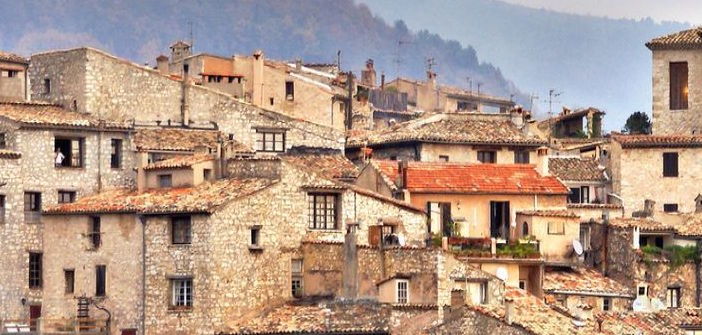The name of this village derives from the term: la Rourée (oak forest). In 1038, the fief belonged to Rainouard du Rouret.
In the Middle Ages, these were scattered habitats; for their protection, these inhabitants grouped themselves around the castle. In 1095, Le Rouret became a “Castrum” and remained so until the Black Plague epidemic in 1350. Everything was deserted, abandoned, with survivors fleeing the scourge of death.
In 1471, the Geoffroy family of Rouret repopulated their fiefs with people from Liguria, who settled in Bastides (country houses in Provençal).
Modern Le Rouret is the result of this reconstruction, hence the absence of a settlement and gathering of hearths.
Le Rouret consists of a scattered habitat. The castle built in the 13th century is of Provençal style; it was expanded and transformed into a pleasure residence in the 17th century. Originally owned by the Grasse Bar family, it came into the possession of the Geoffroy du Rouret family and became the property of the Poniatowski family.
Le Rouret became a commune with the revolution in 1793, the first mayor being Reinard Alexandre. Among the many oil and flour mills, the one in the meadow is the last still operational. The Saint Pons church from the 18th century, with its square bell tower, and the Saint Joseph chapel, enliven the spiritual life of Le Rouret. The name of this village was attributed in 1672.
One must know, as everywhere, how to get lost in the mazes of Le Rouret: the washhouses, the olive groves, the terraced crops, and on the hillside the communal wood where the walker will be encouraged to daydream and wander.
This wood is also rich in archaeology with Dolmen and Menhir. A viewpoint offers a panorama embracing both the rugged and jagged coast as well as the first alpine peaks rising towards cerulean spaces.
The forest is primarily composed of “Semper Robur” oak, always robust; this motto, that of Le Rouret, is evident.
by Thierry Jan


